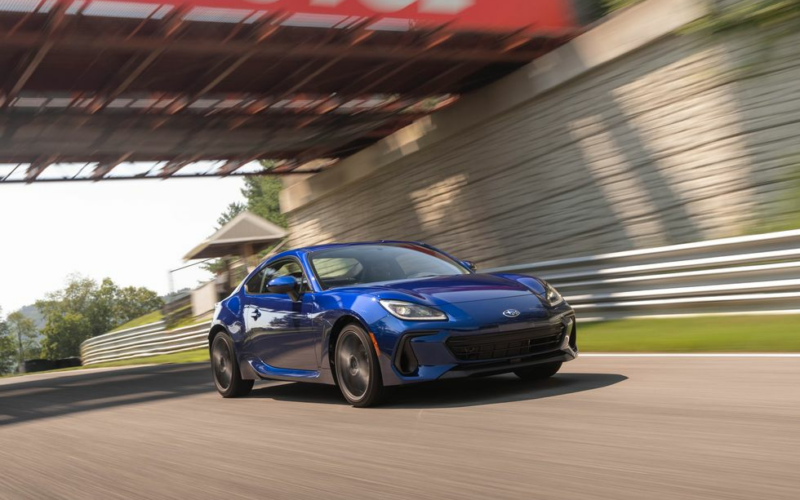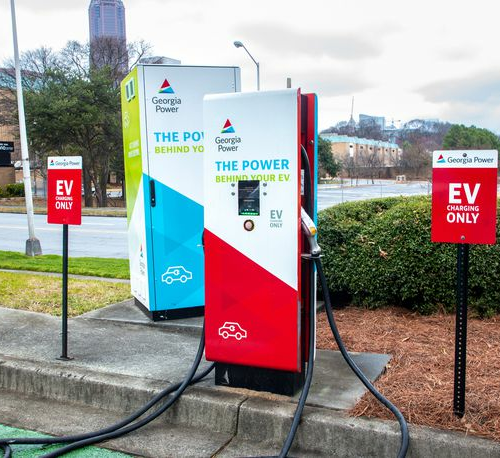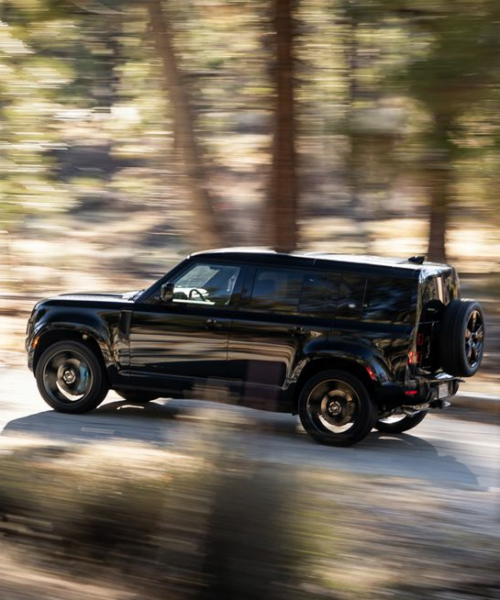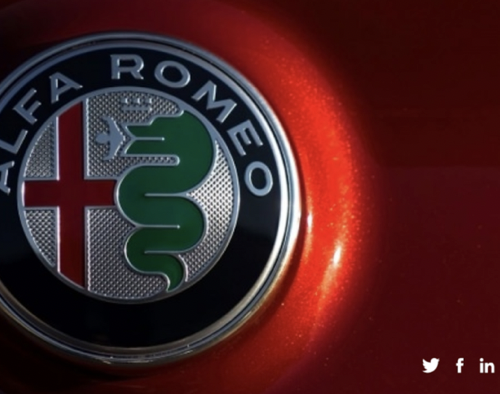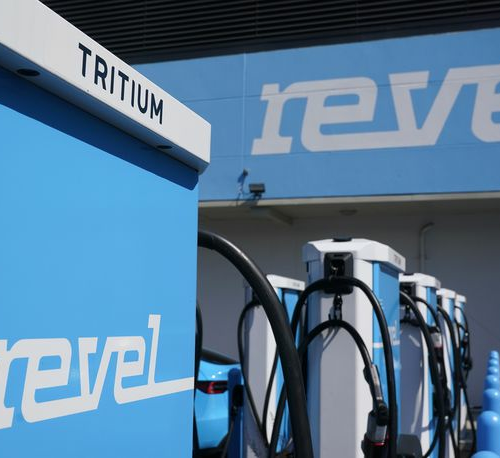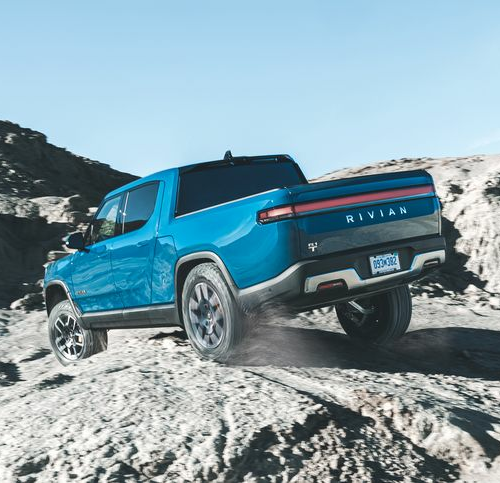BY JAMIE KITMAN | CarAndDriver.Com
Troy Warren for CNT #Cars
The second generation of Subaru’s sports coupe adds power and refinement but keeps the joy alive.
The cynics among us thought the Subaru BRZ and its near identical Toyota twin, the GT 86, were doomed. Launched in 2013, these compact, lightweight, and modestly powered rear-drivers enjoyed agile handling and easy chuckability. They left us smitten, even if they seemed increasingly out of step as the years passed while the world tripped out on mega-horsepower and 23-inch wheel and tire combos.
Mercifully, the world isn’t as SUV-minded as we’d feared, and both cars eked out an existence. Seems the first generation of the Scion/Toyota/Subaru coupes led to 125,000 salesmen closing deals on them, which is an exhausting thought, but that number cleared the way for another generation. Those 125,000 buyers weren’t just any customers, but Toyota and Subaru’s youngest buyers. At barely 30 years old, those folks are right in the demographic erogenous zone that makes carmakers happy. The thinking being that these young customers will stay loyal to the brand for another 50 years.

So, the allure of youth is why the Toyota-bodied, Subaru-powered twins are reborn. The conjoined companies—Toyota recently upped its stake in Subaru to 20 percent while Subaru acquired 0.3 percent of Toyota—went for a second generation. And having just driven the Subaru variant, the 2022 BRZ, to and around Connecticut’s Lime Rock Park road circuit and its new autocross track, we say hallelujah. This twin has returned to scratch an itch that enthusiasts never tire of scratching, and it’s better than ever.
The key to the new BRZ’s success is that it fixes a lot of the complaints we had with the original without affecting the purity of the original. It’s still extraordinarily svelte by modern standards despite additional content and safety equipment. Weighing in at a claimed 2815 pounds in its lightest form, it’s just 17 pounds heavier than the outgoing model. A new aluminum roof with a double-bubble form for extra headroom helps as did the engineering team’s heroic effort at resisting the congenital industry temptation to make everything bigger in the second go-around.

In fact, the BRZ is better in all the ways you’d want it to be. The body structure is stronger and more rigid for better handling and safety—a whopping 50 percent jump in torsional stiffness. Outside, it’s beefier looking and more handsome, if still a bit generic and familiar in the taillights and headlights.
Looks and rigidity are important, but the biggest difference is under the aluminum hood. The old 2.0-liter flat-four is replaced by an enlarged 2.4-liter flat-four similar to the three-row Ascent’s engine, but without a turbocharger. Quicker than before, the naturally aspirated engine’s 228 horsepower is now available across the board. Previously, the manual made 205 and the automatic was rated at 200. But it’s the 184 lb-ft of torque at 3700 rpm that gives the car a midrange surge that the old car’s 156 lb-ft at 6400 rpm couldn’t provide. The new engine should drop 60-mph times below 6.0 seconds for the standard six-speed manual. Expect 7.0 seconds flat for the optional six-speed automatic. Acceleration is acceptably brisk, and the power delivery is without the hiccups of the 2.0-liter, but leaving the Ascent’s turbocharger in place sounds like even more fun. Let’s make that standard limited-slip Torsen differential work for its money!

The engine is pleasant overall with a bit of flat-four idiosyncratic sound to make it unique. It does get slightly raucous at the upper reaches of its rev band. While it may not be the fastest car in your town, the BRZ’s low mass and handling give it the ability to hustle through the corners with ease. Shut off the traction control and stability control, and like its predecessor, tail-out antics are easy to call up.
Ride quality on the road, though firm, is entirely livable for something that handles so well. Steering is eager, with response so instant off center it initially struck us as nervous, but on the track it behaved with the right amount of sensitivity. Whether you select the 17-inch or 18-inch wheels, summer tires are available. Entry level models get the 215/45R-17 Michelin Primacy HP rubber, while the Limited model is equipped with 215/40R-18 Michelin Pilot Sport 4 tires. Both offer decent ride quality—the certain reward for forgoing monster wheels and keeping unsprung weight low.

Subaru tells us that 85 percent of first-gen BRZs were sold with manual transmissions; those numbers were reversed for Toyota’s version. BRZ sales are expected to maintain those percentages, but should the market want more automatics, that can be arranged. The manual not only makes for a quicker and livelier drive with ratios that seemed suited for track work, it also boasts one of the industry’s best shift actions, approaching, if not eclipsing, the Miata’s gearbox.
Interior design and the fit and finish have been notched up to 2022 standards. Limited Edition models feature seating finished in microfiber inserts with a red stripe running down their center line, mirroring the red-stitching theme found throughout the cabin. An 8.0-inch infotainment screen and configurable digital instrument cluster bring the BRZ broadly up to technological date. Oh, and there is a back seat. It’s a real place to sit, and it lends some additional practicality along with 6 cubic feet of trunk room (13 cubes if you fold them down), but you wouldn’t necessarily want to cross multiple time zones back there if you’re more than 6 years old.

The BRZ starts at $28,955 with the Limited model opening at $31,455. Those prices should continue to bring in younger customers as this new Subaru is that rarest of things: a serious sports machine and a serious value proposition. Opting for the six-speed automatic will add $1600 to the sticker of the Premium and $1800 to the Limited trim—which is differentiated by its 18-inch wheels with matte-gray finish, the aforementioned stickier rubber, blind-spot monitoring, and lane-keeping assist. As with automatic Limited models, it also comes with Subaru’s EyeSight driver-assist technology. Because this function will bring the cars to a full stop, the risk of stalling out when brought unexpectedly to a halt means the manual cars don’t get those bits. Fine by us. We’re here to drive.
Let’s hear it for Subaru (and Toyota). With advancements in autonomy and the never-ending SUV-ification of the fleet, an affordable rear-drive sports coupe is a rare thing. We will celebrate its affordable and fun performance for as long as they’ll sell it.

In Other NEWS


























